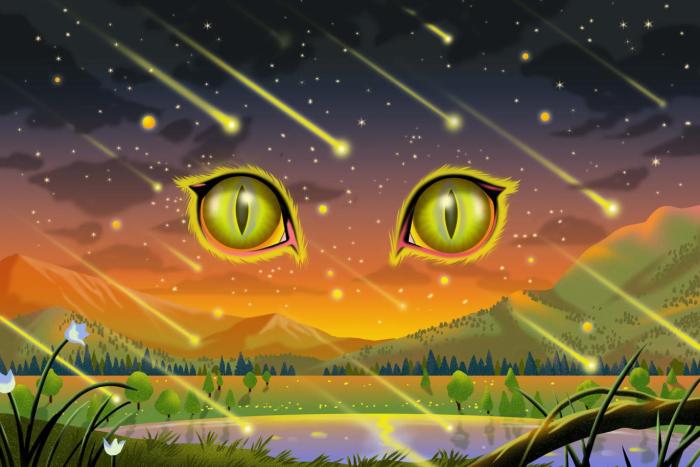Welcome to Mind in Bloom, a column deconstructing current events, music and art.
I joined my wife and her squad as they made the pilgrimage to see Beyoncé on July 9th, the second day of her Renaissance World Tour at Toronto’s SkyDome. The city seemed to be vibrating with the mere knowledge of B’s presence in the GTA. Walking the streets earlier that day, I’d catch glimpses of iridescent silver and glimmering mirror ball tiles affixed to the faces and garments of passersby, content in the knowledge that they too would soon have an audience with the Queen herself.
It was as if we were members of a secret club. This type of shared catharsis has become increasingly rare in recent years. Talking to Jenny from my wife’s crew, we came to the conclusion that Beyoncé Weekend in Toronto carried a level of mutual enthusiasm among the collective consciousness that felt reminiscent of the Raptors’ 2018-2019 NBA championship.
Beyoncé’s place in the culture is singular. There has never been an artist with a platform as large as hers who has taken the risks that she’s taken. She crystallized the concept of the visual album and popularized the surprise album release with 2013’s Beyoncé, making her chiefly responsible for new releases coming out on Fridays instead of Tuesdays in the process. Her impact is staggering.
While most in her position would be happy to coast on their established brand, Bey is an auteur who delights in pushing her art and the mainstream into more offbeat directions. Despite being arguably the defining artist of our time, she’s still creatively restless. And yet, even though she’s sold millions of records and has won more Grammy Awards than any other artist ever, she’s somehow still underrated, having been nominated for the Album of the Year Grammy four times with an infuriating zero wins. She could’ve done things to be a more commercially palatable artist, but she chose to make art that resonated with her people and her culture at her own expense. This is why we stan.
Walking into the coliseum-like SkyDome, the vibe was charged yet serene. The merch line was jovial and it moved briskly, as shirt after shirt sold out. It all felt friendly and inclusive. This was in stark contrast to the aggressive frat boy “rager” energy I typically experience at stadium rap shows. There would be no opening up the pit tonight. Instead, everyone was admiring each other’s homemade disco ball attire.
Beyoncé riding the holographic horse on Renaissance’s cover is a striking image, but I underestimated just how evocative it actually is. It makes one think of Bianca Jagger riding a white horse at Studio 54, disco excess incarnate. The mirror ball aesthetic recalls Damien Hirst’s crystal skull, a recontextualization of dance music culture through a conceptual, high art lens.
What does Beyoncé do for people? You could see it all around us. Our friend Carla made herself an impeccable cowboy hat that was similar to the one Beyoncé wears in the album art. Like the show itself, the hat encouraged her to become the most fabulous version of herself possible. When Beyoncé finally hit the stage, the crowd noise was unlike anything I’ve ever heard before. It was 50,000 people doing primal scream therapy together.
Rather than being an example of just another crass capitalist greedily bilking her fanbase, Bey’s true modus operandi seems to be mass empowerment. Her purpose is to encourage people, especially Black women and the LGBTQ+ community, to embrace and love themselves. Legacy is what moves the needle in the Carter household. The money is just a byproduct of the depth of her connection with her audience.
Beyoncé draws for the salvation of the church in secular form, even using a stage setup that involves an automative robot spraying choir members’ robes so they resemble Technicolor dreamcoats. This is a direct reference to Alexander McQueen’s legendary Spring/Summer 1999 fashion show.
Her performance was virtuosic without being showy. Her vocals were somehow stronger live than on record, suggesting that she actually tones down the vocal acrobatics for mass consumption. I was particularly impressed by her rapping. Clear, precise, and with little to no backing vocals, you can hear her appreciation for Kendrick Lamar shine through in her delivery and through the fact that she chose to feature his voice twice during her set.
Beyoncé’s public persona is relentlessly controlled and inscrutable. On stage, she’s warm and affable, as if she’s more comfortable among those who understand and appreciate her. I was surprised by how campy and playful the show was, bouncing between Las Vegas razzle-dazzle and drag show realness. I certainly never imagined that Beyoncé would ever literally dress up in a bee costume but here we are. This tour might be the highest level of cultural appreciation given to ballroom culture to date.
I was personally touched by the sample of “Can You Feel It” by Mr. Fingers, amazed by how house music was created by gay Black men in Chicago in the early ‘80s and eventually wrapped around the globe to become something so central to so many lives. Frankie Knuckles famously called house music “disco’s revenge,” and that feels like a great way of describing the Renaissance tour. Under-appreciated Black music that was once literally burned and destroyed has come back from the dead to become central to the cultural conversation.
The Renaissance tour and album are a nonstop exercise in Beyoncé citing her sources, hyper-referential in its curation in the singular way that Black art often is. It’s a celebration of our shared cultural memory, putting Lil Uzi Vert’s “Just Wanna Rock” on equal footing with the Jackson 5. Beyoncé insists on giving Grace Jones, Diana Ross, and Donna Summer their flowers in front of the world. Her unselfish choice to lift up the Black progenitors of dance music helps to solidify their legacy at a time when those origins are slowly being erased. Beyoncé’s generosity with the Renaissance World Tour is a microcosm of what Black people can do for each other in a world that doesn’t afford us equal opportunity.







